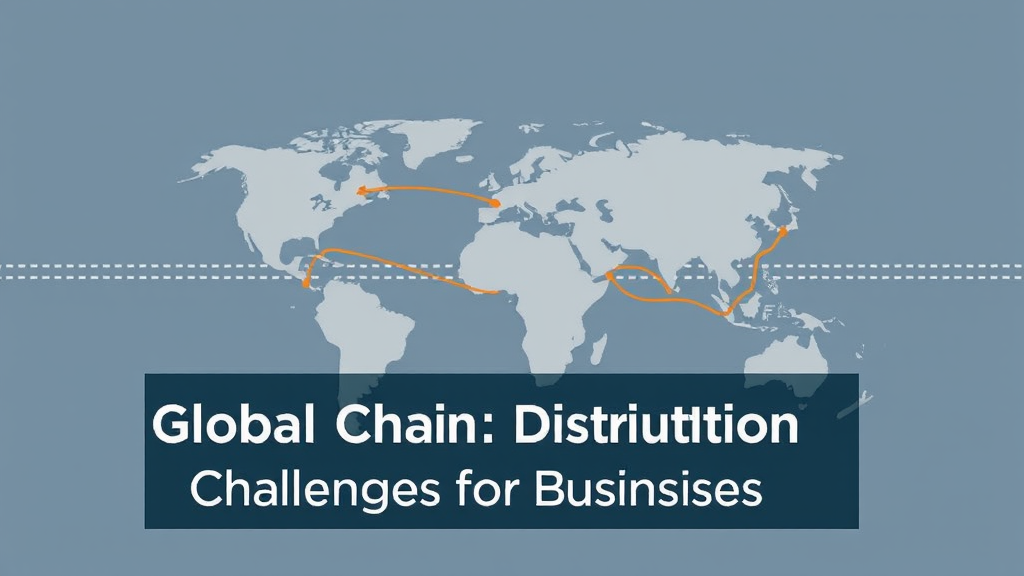Navigating the Stock Market Rollercoaster: Tips for Investors
Understanding Market Volatility
What is Market Volatility?
Market volatility refers to the fluctuations in the price of assets over time. These changes can be influenced by various factors, including economic indicators, political events, and market sentiment. Understanding these dynamics is crucial for investors. It helps them make informed decisions. Volatility can create opportunities for profit, but it also increases risk. This dual nature can be daunting. Many investors feel anxious during turbulent times. It’s essential to stay calm and assess the situation. Remember, volatility is a natural part of the market. Embrace it as a learning experience.
Historical Context of Market Fluctuations
Market fluctuations have a rich historical context that shapes current investment strategies. Significant events, such as the Great Depression and the 2008 financial crisis, illustrate how external factors can impact market stability. For instance, during the Grfat Depression, stock prices plummeted by nearly 90%. This drastic change affected countless investors.
Additionally, technological advancements have altered market dynamics. The rise of algorithmic trading has increased the speed of transactions. This can lead to rapid price changes. Investors must adapt to these new conditions.
Key historical events include:
The 1929 Stock Market Crash
The Dot-com Bubble in the late 1990s
The 2008 Financial Crisis
Understanding these events provides valuable insights. He can learn from past mistakes. History often repeats itself.
Factors Contributing to Volatility
Several factors contribute to market volatility, influencing investor behavior and asset prices. Economic indicators, such as unemployment rates and inflation, play a significant role. When these indicators fluctuate, they can create uncertainty. This uncertainty often leads to rapid price changes.
Political events, including elections and policy changes, also impact market stability. Investors react to news, which can cause sudden shifts. Global events, like natural disasters or pandemics, further exacerbate volatility.
Key factors include:
Economic indicators
Political events
Global crises
Market sentiment
Understanding these elements is crucial for informed investing. He should stay updated on current events. Knowledge is power in volatile markets.
Impact of Volatility on Investment Strategies
Volatility significantly impacts investment strategies, requiring adjustments to risk management. Investors often reassess their portfolios during turbulent times. This reassessment can lead to increased diversification. A well-diversified portfolio can mitigate potential losses.
Moreover, volatility may prompt a shift towards defensive stocks. These stocks tend to be more stable during market fluctuations. Investors might also consider options strategies to hedge against downturns. Such strategies can provide additional protection.
Key considerations include:
Adjusting asset allocation
Increasing cash reserves
Utilizing stop-loss orders
Monitoring market trends
Understanding these strategies is essential for navigating volatility. He should remain proactive in his approach. Adaptability is crucial in changing markets.
Risk Management Strategies
Diversification: Spreading Your Investments
Diversification is a first harmonic strategy in risk management, aimed at reducing exposure to any single asset. By spreading investments across various asset classes, he can minimize potential losses. This approach helps mitigate the impact of market volatility.
Key components of diversification indlude:
Asset allocation across stocks, bonds, and real estate
Geographic diversification to reduce regional risks
Sector diversification to balance industry-specific downturns
Investors should regularly review their portfolios. This ensures alignment with their risk tolerance and investment goals. A well-diversified portfolio can enhance overall returns. He should consider both short-term and long-term strategies. Knowledge is essential for effective diversification.
Setting Stop-Loss Orders
Setting stop-loss orders is a crucial risk management strategy for investors. These orders automatically sell a security when it reaches a specified price. This mechanism helps limit potential losses in volatile markets. By implementing stop-loss orders, he can protect his capital.
Key considerations for setting stop-loss orders include:
Determining an appropriate percentage for loss
Analyzing historical price movements
Adjusting orders based on market conditions
Regularly reviewing stop-loss levels is essential. This ensures they align with current market trends. He should remain disciplined in following these orders. Consistency is vital for effective risk management.
Understanding Your Risk Tolerance
Understanding risk tolerance is essential for effective investing. It refers to an individual’s ability to endure market fluctuations. Assessing this tolerance helps in making informed investment decisions. He should consider factors such as age, financial situation, and investment goals.
A higher risk tolerance may lead to greater potential returns. However, it also increases the likelihood of significant losses. Conversely, a lower risk tolerance typically favors more conservative investments.
To evaluate risk tolerance, he can use questionnaires or consult financial advisors. Regularly reassessing this tolerance is important as circumstances change. Knowledge of one’s risk tolerance can guide investment strategies. It promotes confidence in decision-making.
Using Hedging Techniques
Using hedging techniques is a vital aspect of risk management in investing. These strategies aim to offset potential losses in an investment portfolio. He can employ various instruments, such as options and futures contracts, to achieve this. By doing so, he can protect his investments from adverse market movements.
For example, purchasing put options allows him to sell an asset at a predetermined price. This can limit losses if the asset’s value declines. Additionally, diversifying across asset classes can serve as a hedge against market volatility.
Key hedging strategies include:
Options trading
Futures contracts
Currency hedging
Diversification
Understanding these techniques enhances his ability to manage risk effectively. Knowledge is crucial for successful hedging. It can lead to more stable investment returns.
Timing the Market: Is It Possible?
The Myth of Market Timing
The myth of market timing suggests that investors can predict market movements to maximize returns. However, research indicates that consistently timing the market is extremely difficult. Many factors influence market fluctuations, making predictions unreliable. He should focus on long-term strategies instead.
Studies show that missing just a few of the best trading days can significantly impact overall returns. For instance, being out of the market during these days can lead to substantial losses.
Key points to consider include:
Market timing is often inaccurate.
Long-term investing yields better results.
Emotional decisions can lead to mistakes.
Understanding these aspects can help him make informed investment choices. Knowledge is essential for successful investing.
Indicators to Watch for Timing Decisions
When considering timing decisions, several key indicators can provide valuable insights. Economic indicators, such as GDP growth and unemployment rates, reflect the overall health of the economy. These metrics can influence market sentiment and investment strategies. He should monitor these closely.
Technical indicators, including moving averages and relative strength index (RSI), help assess market trends. Moving averages smooth out price data, revealing potential support and resistance levels. RSI indicates whether an asset is overbought or oversold.
Additionally, sentiment indicators, like the VIX, measure market volatility and investor fear. High levels of fear may signal potential buying opportunities. Understanding these indicators can enhance his decision-making process. Knowledge is power in investing.
Long-Term vs. Short-Term Strategies
Long-term and short-term strategies serve different investment objectives. Long-term strategies focus on capital appreciation over several years. This approach often involves buying and holding assets, allowing for compounding returns. He can benefit from market growth over time.
In contrast, short-term strategies aim for quick profits through frequent trading. These strategies require active monitoring of market conditions. He must be prepared for volatility and rapid price changes.
Key differences include:
Time horizon: Long-term vs. short-term
Risk tolerance: Higher for short-term
Investment vehicles: Stocks vs. options
Understanding these distinctions is crucial for effective investing. Knowledge leads to better decision-making. Each strategy has its merits.
Psychological Factors in Timing
Psychological factors play a significant role in market timing decisions. Emotions such as fear and greed can heavily influence investor behavior. For instance, fear may lead to panic selling during market downturns. This often results in missed recovery opportunities.
Conversely, greed can drive investors to chase high returns, leading to impulsive decisions. He should recognize these emotional triggers. Cognitive biases, such as overconfidence and loss aversion, further complicate decision-making.
Key psychological aspects include:
Emotional responses to market changes
Cognitive biases affecting judgment
The impact of herd behavior
Understanding these factors can enhance his investment strategy. Awareness is crucial for better outcomes. He must remain disciplined inward his approach.
Staying Informed: Resources for Investors
Financial News Outlets and Their Importance
Financial news outlets are essential for investors seeking timely information. These sources provide insights into market trends, economic indicators, and corporate performance. Staying informed allows him to make educated investment decisions.
Key financial news outlets include:
Bloomberg
CNBC
Reuters
The Wall Street Journal
Each outlet offers unique perspectives and analysis. He should diversify his information sources to gain a comprehensive view. Additionally, subscribing to newsletters can provide curated content tailored to his interests.
Understanding the importance of reliable news is crucial. It helps him navigate market fluctuations effectively.
Utilizing Social Media for Market Insights
Utilizing social media can provide valuable market insights for investors. Platforms like Twitter and LinkedIn offer real-time updates and expert opinions. He can follow industry leaders and analysts to stay informed. This access to diverse viewpoints enhances his understanding of market dynamics.
Key social media platforms include:
Twitter for quick updates
Investment Forums and Community Discussions
Investment forums and community discussions are valuable resources for investors. These platforms allow individuals to share insights and strategies. Engaging in discussions can provide diverse perspectives on market trends. He can learn from the experiences of others.
Popular forums include:
Reddit’s r/investing
Bogleheads
The Motley Fool Community
Participating in these communities fosters knowledge exchange. He should approach discussions critically, verifying information before acting. Active engagement can enhance his investment acujen. Knowledge shared is knowledge gained.
Educational Resources and Courses
Educational resources and courses are essential for investors seeking to enhance their knowledge. These resources provide structured learning on various financial topics. He can explore subjects such as portfolio management, risk assessment, and market analysis.
Key educational platforms include:
Coursera for online courses
Khan Academy for foundational concepts
Investopedia for articles and tutorials
Participating in these courses can build a solid understanding of investment principles. He should prioritize reputable sources to ensure quality information. Continuous learning is vital in the ever-evolving financial landscape. Knowledge empowers better investment decisions.
Emotional Discipline in Investing
The Role of Emotions in Investment Decisions
The role of emotions in investment decisions is significant and often underestimated. Emotional responses can lead to irrational behavior, impacting financial outcomes. For instance, fear may cause panic selling during market downturns.
Conversely, greed can drive investors to take excessive risks. He should recognize these emotional triggers to maintain discipline. Cognitive biases, such as overconfidence, can further cloud judgment.
To mitigate emotional influence, he can implement strategies such as:
Setting predefined investment goals
Utilizing stop-loss orders
Regularly reviewing his portfolio
Understanding the emotional aspects of investing is crucial. Awareness leads to better conclusion-making. Emotional discipline is key to long-term success.
Strategies to Maintain Emotional Control
Strategies to maintain emotional control are essential for successful investing. He can establish a clear investment plan that outlines specific goals and risk tolerance. This plan serves as a guide during market fluctuations. Having a structured approach reduces impulsive decisions.
Additionally, practicing mindfulness can help him stay focused. Techniques such as meditation or deep breathing can alleviate stress. Regularly reviewing his portfolio can also provide perspective. This helps him avoid emotional reactions to short-term market changes.
Key strategies include:
Setting predefined entry and exit points
Keeping a trading journal to track emotions
Seeking support from financial advisors
Understanding and managing emotions is crucial. Awareness leads to better investment outcomes. Emotional control fosters long-term success.
Recognizing and Avoiding FOMO
Recognizing and avoiding FOMO is crucial for effective investing. Fear of missing out can lead to impulsive decisions. He may feel pressured to invest in trending assets without proper analysis. This often results in poor financial outcomes.
To combat FOMO, he should establish a clear investment strategy. This strategy should include specific criteria for asset
Building a Support System for Investors
Building a support system for investors is essential for maintaining emotional discipline. Surrounding himself with knowledgeable individuals can provide valuable insights. He can benefit from discussions with peers and mentors who share similar goals. This network can help him navigate market challenges effectively.
Additionally, joining investment groups or forums fosters collaboration. These platforms allow for the exchange of ideas and strategies. He should actively participate to gain diverse perspectives.
Key components of a support system include:
Networking with experienced investors
Seeking advice from financial advisors
Engaging in community discussions
Having a strong support system enhances confidence. It encourages informed decision-making.









